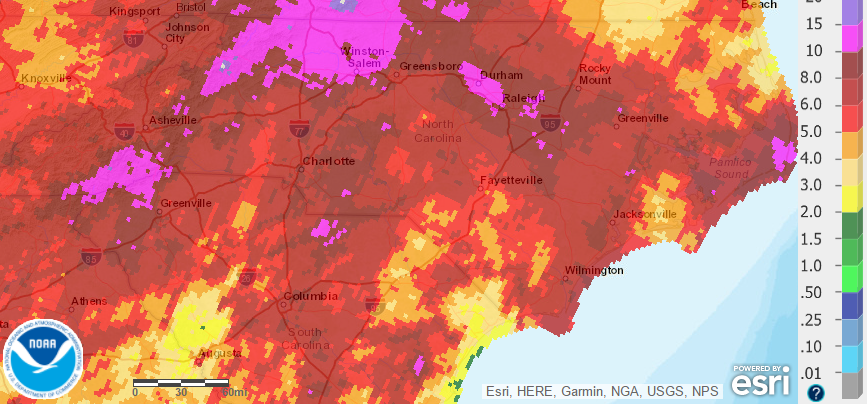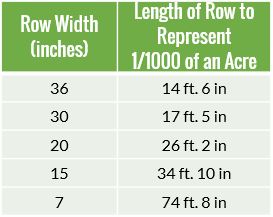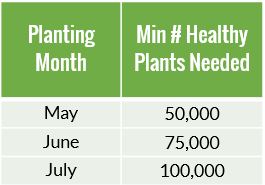Certain parts of the state have seen 10+ inches of rain in the last 30 days (compared to our normal 3-4”). With the rain certain parts have seen in the last few weeks, it might have been tough to get in the field. But if you did get beans in the ground in between these rain events, what has that water done to your soybeans?
If soils become saturated after plating, stand reduction or uneven emergence is likely to occur to some degree, depending on the stage of the soybean plant and other environmental factors. Soybean stands could be reduced from:
- Compaction and crusting from a heavy rain
- Saturated soils that have limited oxygen available for germination
- Germinating seed this is temporarily flooded
If you do have soybeans that have experience excessive amounts of water, the first thing you should do is evaluate your stand once seedlings have emerged. To quickly evaluate the stand, you can count the number of plants in 1/1000th of an acre.
A quick reference chart is below to determine the length of row to use for common row widths.
For the most accurate estimates, make five to ten counts from different areas of the field and average these numbers. Your final stand is that average times 100. (i.e. if you count 120 plants in that length of row, your stand is 120,000 plants per acre).
If your stands are lower than you were expecting – don’t panic. At this point in the year, even stands as low as 75,000 plants/acre should yield very close to the maximum (see this post, for more info on seeding rates). Dr. Dunphy doesn’t suggest replanting unless the stand is less than 50,000 plants/acre as the difference in yield will not cover the cost of replanting.
As a side note, if you are tech savvy and want a quick way to estimate your stands, check out this app from the Wisconsin Soybean Program. The Bean Cam App uses your smartphone camera to calculate a field’s plant population.











